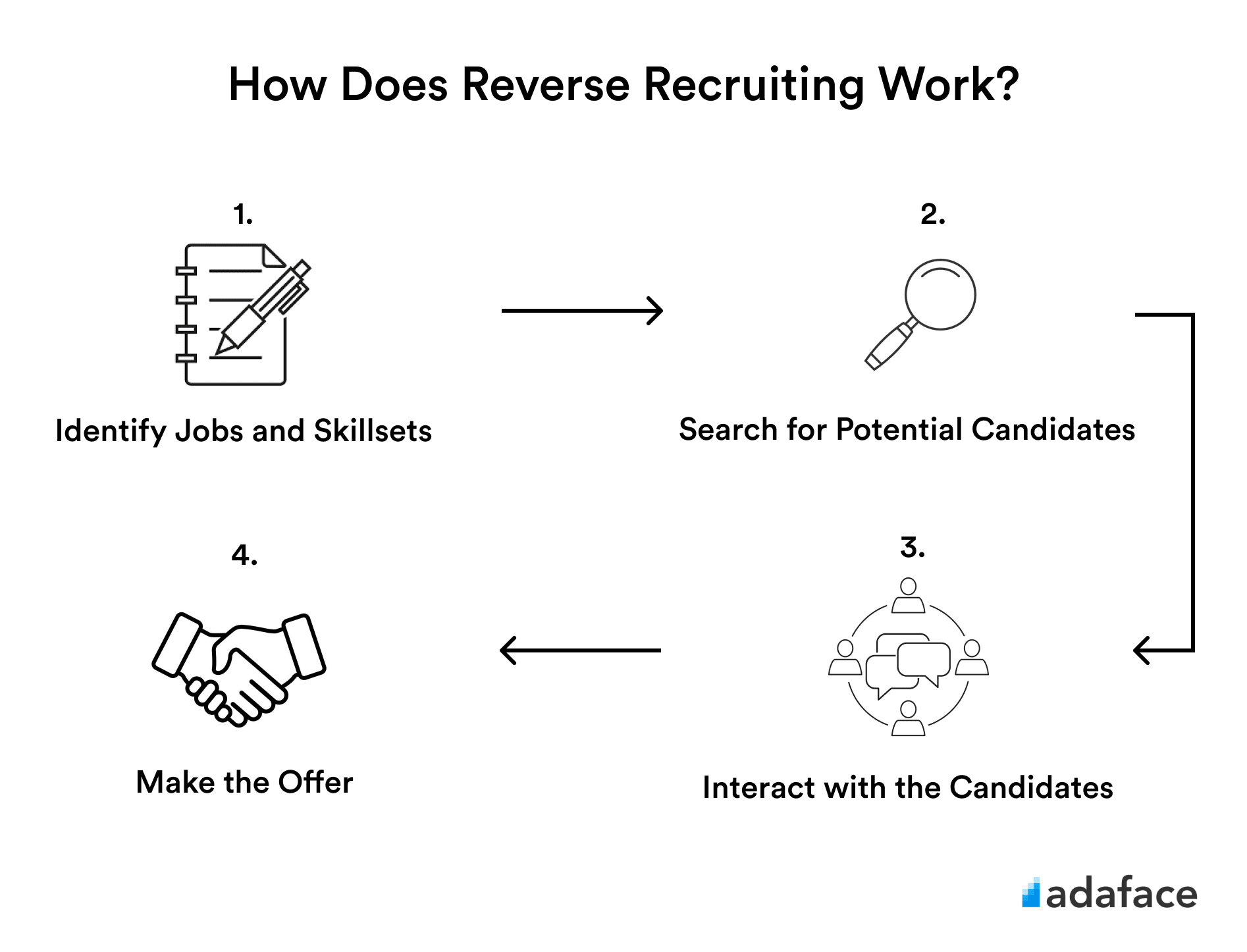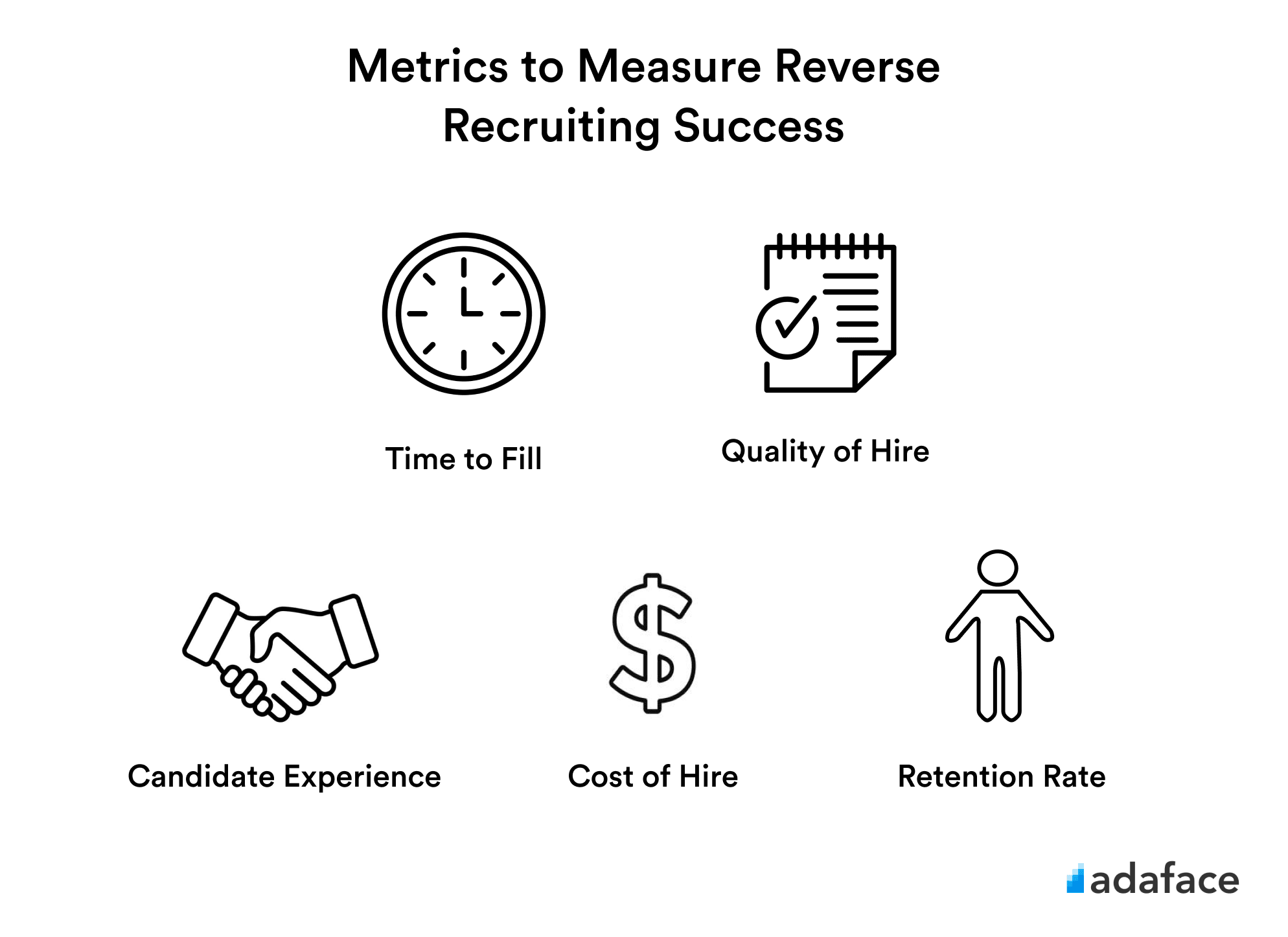

If you're tired of the usual job posts grind and want to try something new, you're in the right place. Forget about putting up job posts and hoping for the best applicants – it's time to take control of your hiring. Stick around, and we'll give you some tips and tricks for turning the tables of your hiring process through the technique of reverse recruiting.
What is Reverse Recruiting?
Reverse recruiting is a strategy in which companies actively seek out and approach potential candidates for job opportunities rather than wait for applicants to come to them. This approach can be particularly beneficial when you are looking to attract top talent, as it allows you to target specific individuals who may be a good fit for the organization.
Benefits of Reverse Recruiting
Reverse recruiting is a unique approach to recruitment that has benefits across the board.
Fill Positions Requiring Specific Skillsets
Reverse recruiting allows you to be proactive in the search for talent. Rather than waiting for the right candidate to come along, you get to take the initiative and reach out to potential employees directly. This can be especially useful for hard-to-fill positions or for roles that require a very specific set of skills and experience.
Lower Employer Competition
When you seek out and approach potential candidates, you differentiate yourself from other employers who are passively waiting for applicants to come to them. This can position your company as an employer of choice and make it more appealing to top talent.
Set the Foundation for Young Talent
Another benefit of reverse recruiting is that it allows companies to connect with potential candidates at different stages of their careers. For example, companies can reach out to students and recent graduates who may not yet have much work experience but show potential and could be a good fit for the organization. This can help companies build a talent pipeline and identify potential future employees early on in their careers.
Create a Diverse Workforce
By actively seeking out and reaching out to a diverse pool of candidates, you can ensure that you consider a wide range of perspectives and backgrounds when filling job openings. This can help to create a more inclusive and diverse workplace, which can have numerous benefits for both your company and your employees.
How Does Reverse Recruiting Work?

Step 1: Identify Jobs and Skillsets
Identify the positions your company is looking to fill and the specific skills and experience required for those roles. This will help to narrow down the pool of potential candidates and make it easier to identify individuals who could be a good fit for the organization.
Step 2: Search for Potential Candidates
Once you have identified the positions and skills you are looking for, you can begin to search for potential candidates. This can be done through various means, including online job boards, networking events, and social media, to find and connect with potential employees.
Step 3: Interact with the Candidates
Reach out to them and invite them to learn more about your company and the available job opportunities. You can do this through email, phone calls, or in-person meetings. The key difference with regular recruiting lies in this step since you need to showcase the opportunities and benefits you offer and emphasize why the potential candidate would be a good fit for the organization.
Step 4: Make the Offer
If the potential candidate is interested in learning more, you can invite them to apply for the job and provide them with the necessary application materials. From there, you can continue to engage with the candidate and provide them with additional information and support to help them decide whether to accept the job offer.
Metrics To Measure Reverse Recruiting Success
You now want to figure out whether your reverse recruiting strategy has succeeded. Here are some metrics that can help you determine this:

- Time to fill: This allows you to measure the amount of time it takes to fill an open position. Since you have already zeroed in on the candidates you want, reverse recruiting typically has a low time to fill as opposed to conventional recruiting techniques.
- Quality of hire: Measure the success of the individuals you hire in terms of their job performance and overall fit within the company. A high quality of hire indicates that you effectively attract and hire top talent.
- Candidate experience: A positive candidate experience can help improve your employer brand, which makes reverse recruiting much easier.
- Cost per hire: Since you save costs that you otherwise spend on advertising your job posts, reverse recruiting must have a low cost per hire, indicating that you are effectively attracting and hiring top talent.
- Retention rate: A high retention rate indicates that you are effectively approaching the right individuals who are a good fit in your culture and are happy and engaged in their work.
On a Final Note
Reverse recruiting is a fun and effective way for you to find top talent and for job seekers to land their dream job. By flipping the traditional hiring process on its head, both parties can benefit from a more personalized and engaging experience. So next time you're looking to hire, consider trying out reverse recruiting and see the results for yourself!

Pragnesh is the EiR at Adaface. He loves reading books more than scrolling through social media, which is a big deal if you ask him.
Spending too much time screening candidates?
We make it easy for you to find the best candidates in your pipeline-
with a 40 min skills test.


